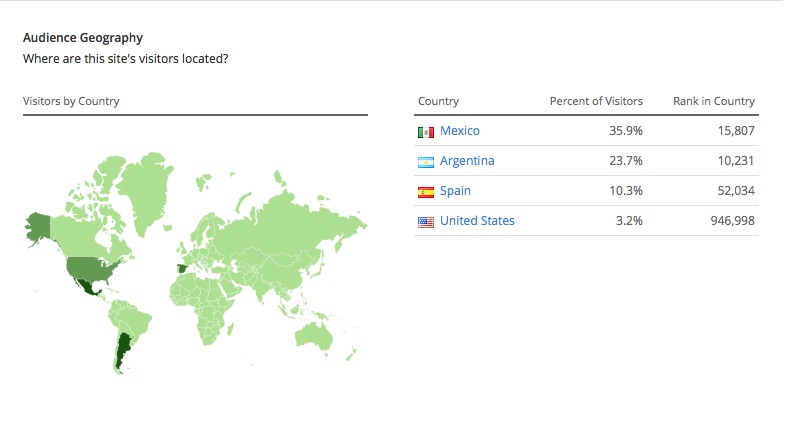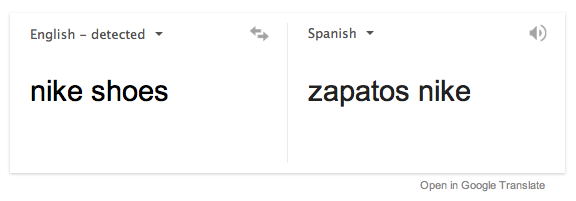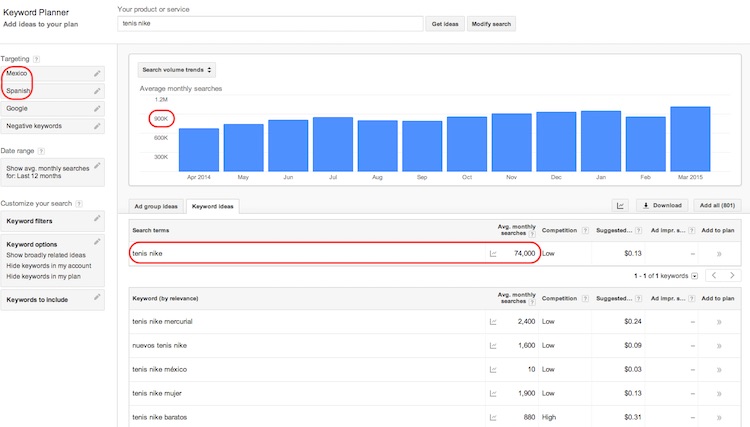5 International SEO Tips You Can Steal – ISEO
SEO can get a little confusing. After all, there’s SEO, local SEO, International SEO and on and off-page SEO – do you know the difference? Well don’t worry, this article will give you a snapshot of the basics of International SEO (ISEO) and help you leverage it to better generate traffic, leads and drive sales.
If you are ready to tackle more than one country on your sales efforts then it’s time to consider developing a strong International SEO strategy and execution.

5 international SEO tips you can steal by Target Latino – Original Photography Courtesy Ryan McGuire
Assessing your international SEO current status
Begin by assessing the level of effort needed as you may already be driving organic traffic from the countries you are intending to sell to. Many companies decide to start their sales efforts to Latin American countries when they notice an increase in traffic and sales requests from them. Others begin with globalization as a goal as they want to capture their share of international traffic and sales.
Check your traffic analytics
First, take a look at your international traffic and find out where it’s coming from and their language.
Google analytics can provide you with a wealth of information. You can identify the language and the geographic location of your website visitors by accessing the Language and Geo reports under Audience.
While you are in Google Analytics, you might as well check for traffic volume by country and under Acquisition by type of traffic: referral, organic search, direct and social. We can safely assume that you are not running any search engine marketing (SEM) or Pay-Per-Click (PPC) campaigns yet, but if you are, then add this to your international SEO assessment as well.
Here you can see the estimated traffic from a website which receives the majority of its traffic from Mexico, Argentina, Spain and the United States:
(Source: Alexa Report and rankings)
This website that is very well positioned in the countries listed, but we still need to figure out if these the countries we want to do business with, what the current traffic volume is to the website and, above all, what is their online market size.
Discover the Market’s Search Size
The next step in this assessment is the analysis of the potential search market. That is, how many people are searching for these products or services in average every month.
Keyword research
You can use Google AdWords and segment by country and language to see how many searches your products and services are getting each month:
Most people would translate “Nike Shoes” as “zapatos Nike” and assume the size of this market is too small in Mexico as there’s only 1,600 average monthly searches for the branded term “zapatos Nike.”
This would be a huge mistake for those attempting to gauge the size of the Mexican market for these shoes, as the appropriate main keyword to search for in Mexico is “tenis Nike,” a term that has an average of 74,000 searches per month. And this is just the tip of the 900K monthly searches for sports apparel in Mexico.
Needless to say, International SEO planning and execution demands an understanding of language and culture coupled with literary flair for increased engagement and technical knowledge for SEO implementation.
Knowing the size of the total market will help you estimate your current market share of the online search market for your particular product or service.
Don't miss: What is inbound marketing and why should you care?
International SEO: 5 Tips to Get you Started
Ok. You liked what you saw and you are ready to begin planning for International SEO. There’s several factors to consider before you dive right into the everyday SEO activities.
1Country or Language Targeting?
This is a defining factor for your international SEO or ISEO implementation. It’s best to think through it now and now wait until you have to re-engineer your whole site.
When you deal with a multilingual (or even with one additional language with country nuances) there’s the question of developing a strategy around a language or a country.
Both strategies have advantages and disadvantages.
Targeting by Language
On the pro side, the overall cost of implementation is lower because you can have local hosting, no country specific top level domains (ccTLD’s,) and a significantly lower expense in language SEO and content developers.
The disadvantages to targeting by language are somehow related. First, for search engine optimization, ranking becomes more difficult – not impossible – as Local SEO has taught us that search algorithms are generally built around geographical proximities to the searcher, and at a global scale this is no different. Second, as we saw on the Nike Shoes example above, dialects and local language usage and preferences need to be taken into consideration to be able to rank even on countries that share the same language.
Targeting by Country
The advantages to targeting by country for International SEO begin with the biggest disadvantage for targeting by language. Search engine optimization can be implemented to its fullest simply by following Google’s recommendations, and with in-country hosting coupled with ccTLDs it becomes easier to rank better than a lower number of in-country competitor’s. This also allow us to perform better keyword targeting and keyword alignment, provide local signals to search engines and increase the trust factor amongst our visitors (although this last factor needs to be further evaluated in Latin America as people may trust a non-localized TLD best.)
Of course, if properly implemented, you can leverage off your ranking success from country-specific International SEO solid execution to grow other countries much faster.
This sounds too good to be true, right? Well, here’s the cons. If you are not careful enough on its implementation, you may end up duplicating content. And if you work on SEO, you know of the impact of duplicate content when it comes down to Google or any other search engine. For those of you who would like to learn more, I recommend this Moz article on Duplicate Content.
We will expand on the use of language targeting and country targeting on a future article on hreflang implementation.
The other disadvantage of country targeting for International SEO is the cost. Not only will you eventually need hosting local to the countries and several ccTLD’s, but the maintenance of several websites and development of SEO optimized content for each country/language.
There are many more factors to take into account when deciding on one versus the other, but the ones mentioned above, are of paramount importance.
If you are not extremely serious about going global, you may cut corners by targeting by language.
“Targeting by country is true localization, competition is reduced, and crucial trust is gained. Yeah, it will cost you a lot more in the short term, but in the long term you may just win a market that thinks your brand is homegrown.” – by Michael Bonfils at Search Engine Watch
The truth is, the more targeted you become, the better you can address the needs and cultural singularities of your audience.
2Developing your URL structure
Now, that you have made a decision between country targeting or language targeting, it’s time to define your website’s url structure.
Country targeting
Businesses who choose to go with a country specific URL structure should ideally have their top-level domain (TLD) specific to their country (Country Code Top Level Domains or ccTLD).
For example:
www.casarcasar.com.mx for the Mexico online property, and;
www.casarcasar.com.br for their Brazilian online property.
These can be implemented on 100% separate sites and hosting servers or, less ideally, in sub-folders or sub-domains where the ccTLDs then point to.
Language targeting
There are also three choices here and their order of preference is the exact same, although you can definitely get away with organizing in sub-folders for language targeting. As a matter of fact, even a WordPress multi-site is a group of sub-folders or sub-domains – usually depending on your hosting WordPress installation settings – that you can use for language targeting.
Here’s another one of our clients that was implemented with language targeting on WordPress and different TLDs: redshoemovement.com hosts the English version of the site, and;
redshoemovement.es hosts the content in Spanish for the U.S. and Latin America.
And here is the Apple website, that uses the apple.com domain with sub directories for various countries and regions in a mix of country and language targeting:
http://www.apple.com/la/ (LA for Latin America, includes Argentina, Paraguay, Costa Rica, Dominican Republic and others)
This allows them to roll out certain products by country, language and region. Notice how the iWatch is available in Mexico but not the rest of Latin America.
3Use of the rel=”alternate” hreflang=”x” annotations
It’s very important to let Google know that there are pages that correspond to each other – meaning, they have the same content – but they are localized for a different language and/or country. You don’t want Google to see you as duplicating content willy nilly. We will expand on the use of hreflang on a future post.
4Localization Signals to Consider
Both local SEO marketers and global SEO marketers should care about localization. Understanding local culture, colloquialisms, and use of language are key when developing optimized content for these locally or internationally targeted websites.
Of paramount consideration then, are the different signals you can provide with in-country addresses, currency, international phone numbers, etc. You may also setup Google Webmasters to geolocate in your target countries (beware, you can only set one country at a time) and dedicate efforts to in-country link earning – emphasis on earning. 😉
Here are the results of a strong International SEO strategy and execution with language targeting – with a twist – for Latin America.
SemRush report for http:// bodasnovias.com showing organic traffic from top 20 organic search results from 2014 to April 2015
5Other Things to Consider for international SEO
As a brand or a business owner the focus is on running the business, not spending months mastering SEO. As a result, many businesses tend to outsource their SEO efforts to digital agencies who may not always be the best option.
When focusing on optimizing for ISEO, some brands will select Language Service Provides (LSPs) that will sometimes offer ISEO services.
The ideal combination for International SEO is a digital agency with an understanding of culture that specializes in linguistics.
This is because:
It will have a number of linguists based on your ‘target locations’. They will understand your business and know how to deliver your message to generate the best impact locally.
Most digital agencies wouldn’t be able to spot these translation subtleties, because they don’t have the staff to do it. LSPs have linguists and be able to turn out highly engaging pieces of content but lack the technical expertise SEO demands nowadays.
An agency that specializes in both, has linguists who specialize in SEO and know which words are more commonly used in their respective country. They can help you find keyword niches that you’d otherwise never have known about. This type of SEO agency will also be better equipped to help you “earn” natural backlinks to your websites and assist you with International SEO strategy development and implementation.
I hope this has given you a deeper insight into International SEO and when your business should use it. If you have any questions, feel free to contact us today for more information.
Read more about our International SEO services.
6 essential Pinterest SEO tips to develop natural backlinks to your site

















